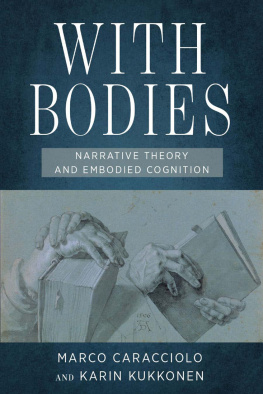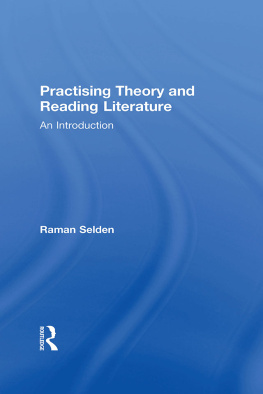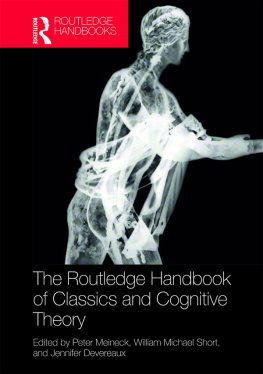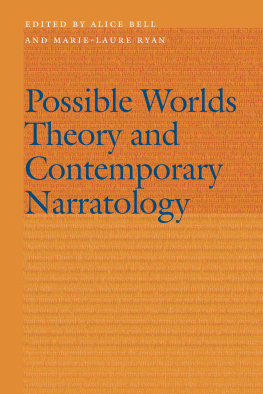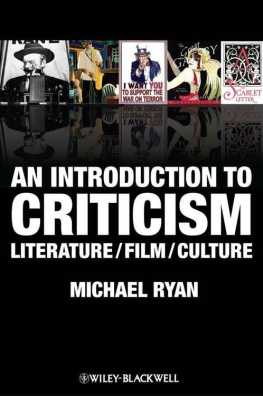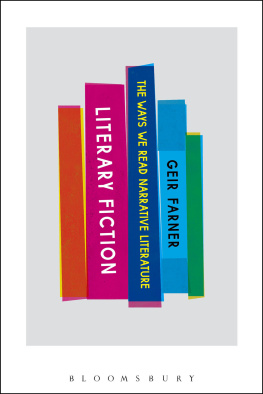
WHY WE READ FICTION
THEORY OF MIND AND THE NOVEL
Lisa Zunshine

THE OHIO STATE UNIVERSITY PRESS COLUMBUS
Copyright 2006 by The Ohio State University. All rights reserved.
Library of Congress Cataloging-in-Publication Data
Zunshine, Lisa. Why we read fiction : theory of mind and the novel / Lisa Zunshine.
p. cm.(Theory and interpretation of narrative series) Includes bibliographical references and index. ISBN 0-8142-1028-7 (cloth : alk. paper)ISBN 0-8142-5151-X (pbk. : alk. paper)
1. Fiction. 2. FictionPsychological aspects. 3. Books and reading. 4. Cognitive science.
I. Title. II. Series. PN3331.Z86 2006 809.3dc22
2005028358
Cover design by Laurence Nozik. Text design and typesetting by Jennifer Forsythe. Type set in Adobe Garamond. Printed by Thomson-Shore, Inc.
The paper used in this publication meets the minimum requirements of the American National Standard for Information SciencesPermanence of Paper for Printed Library Materials. ANSI Z39.48-1992.
98765432 1
Contents
List of Illustrations vii Acknowledgments ix
PART I: ATTRIBUTING MINDS
1. Why Did Peter Walsh Tremble? 3
2. What Is Mind-Reading (Also Known as Theory of Mind)? 6
3. Theory of Mind, Autism, and Fiction: Four Caveats 10
4. "Effortless" Mind-Reading 13
5. Why Do We Read Fiction? 16
6. The Novel as a Cognitive Experiment 22
7. Can Cognitive Science Tell Us Why We Are Afraid of Mrs. Dalloway ? 27
8. The Relationship between a "Cognitive" Analysis of Mrs. Dalloway and the Larger Field of Literary Studies 36
9. Woolf, Pinker, and the Project of Interdisciplinarity 40
PART II: TRACKING MINDS
1. Whose Thought Is It, Anyway? 47
2. Metarepresentational Ability and Schizophrenia 54
3. Everyday Failures of Source-Monitoring 58
4. Monitoring Fictional States of Mind 60
5. "Fiction" and "History" 65
6. Tracking Minds in Beowulf 73
7. Don Quixote and His Progeny 75
8. Source-Monitoring, ToM, and the Figure of the Unreliable Narrator 77
9. Source-Monitoring and the Implied Author 79
10. Richardson's Clarissa: The Progress of the Elated Bridegroom 82
(a) Mind-Games in Clarissa 83
(b) Enter the Reader 91
11. Nabokov's Lolita: The Deadly Demon Meets and Destroys the Tenderhearted Boy 100
(a) " Distributed" Mind-Reading I: A "comic, clumsy, wavering Prince Charming" 103
(b) " Distributed" Mind-Reading II: An "immortal daemon disguised as a female child" 109
(c) How Do We Know When Humbert Is Reliable? 112
PART III: CONCEALING MINDS
1. ToM and the Detective Novel: What Does It Take to Suspect Everybody? 121
2. Why Is Reading a Detective Story a Lot like Lifting Weights at the Gym? 123
3. Metarepresentationality and Some Recurrent Patterns of the Detective Story 128
(a) One Liar Is Expensive, Several Liars Are Insupportable 130
(b) There Are No Material Clues Independent from Mind-Reading 133
(c) Mind-Reading Is an Equal Opportunity Endeavor 138
(d) "Alone Again, Naturally" 141
4. A Cognitive Evolutionary Perspective: Always Historicize! 153
CONCLUSION: WHY DO WE READ (AND WRITE) FICTION?
1. Authors Meet Their Readers 159
2. Is This Why We Read Fiction? Surely, There Is More to It! 162
Notes 165 Bibliography 181 Index 193
Illustrations
| Figure 1 | "Of course I care about how you imagined I thought you perceived I wanted you to feel." The New Yorker Collection 1998 Bruce Eric Kaplan from cartoonbank.com. All Rights Reserved. | 30 |
| Figure 2 | Clarissa dying. Reproduced courtesy of McMaster University Library. | 83 |
| Figure 3 | Book cover of MANEATER by Gigi Levangie Grazer reproduced with the permission of Simon & Schuster Adult Publishing Group. Book cover, Copyright 2003 by Simon & Schuster. All rights reserved. Michael Mahovlich / Masterfile (image code 700-075736). | 144 |
| Figure 4 | "What else is there that I can buy you with?" Sam Spade and Brigid O'Shaughnessy before Sam finds out that she killed Archer. | 151 |
| Figure 5 | "When one in your organization gets killed, it is a bad business to let the killer get away with itbad all around, bad for every detective everywhere." Sam and Brigid after he realizes that she killed Archer. | 151 |
Acknowledgments
I had a great time working on this book because of the people whom I
have met in the process. First, in the late 1990s, I had the privilege to sit in for several semesters on the graduate seminars taught by Leda Cosmides and John Tooby at the University of California, Santa Barbara, an experience that I immediately recognized back then and continue to consider now a once-in-a-lifetime learning opportunity. Second, over the last seven years, I have been fortunate to get to know a distinguished cohort of scholars working with cognitive approaches to literature. I am simply listing them here in alphabetical order to resist the temptation to fill pages with the expression of my admiration for their work and my gratitude for their friendship: Porter Abbott, Frederick Louis Aldama, Mary Crane, Nancy Easterlin, Elizabeth Hart, David Herman, Patrick Colm Hogan, Alan Palmer, Alan Richardson, Ellen Spolsky, and Blakey Vermeule. I could similarly talk forever about James Phelanwho has been encouraging my work since the time of publication, in his journal Narrative, of my essay on Theory of Mind and Mrs. Dallow ay but let me just say that one could not wish for a better editor or mentor. Peter Rabinowitz, Phelan's co-editor of The Ohio State University Press's book series "Theory and Interpretation of Narrative," and Uri Margolin, a reader for the series, offered the most thorough and thoughtful responses to my manuscript. If the final product does not live up to their excellent suggestions, the fault is all mine. The Ohio State University Press continues to impress me as an exemplary press, a privilege for any scholar to publish with: I am grateful to Laurie Avery, Sandy Crooms, Maggie Diehl, Malcolm Litchfield, and Heather Lee Miller for their hard work and support. The participants of the Lexington IdeaFestival (2004); of the annual meeting of the International Society for the Study of Narrative (2003, 2004, 2005); and of the "Cognitive Theory and the Arts" seminar at the Humanities Center at Harvard University (2004) asked great questions and made excellent suggestions. Jason E. Flahardy and Christian Trombetta from the Special Collections and Archives at the University of Kentucky's King Library have been most helpful with illustrations, and so has been the College of Arts and Sciences at the University of Kentucky, which once more came through in the most timely and generous manner to pay for the reproduction of these illustrations. Last but not least, I am indebted to Chris Hair and Anna Laura Bennett, who were invaluable for editing various drafts of my manuscript; to my students at the University of Kentucky, Lexington, whose smart and creative responses to Clarissa and Lolita have made teaching those challenging novels a pleasure; and to Etel Sverdlov, who reads and jokes with the best.
PART 1
ATTRIBUTING MINDS
WHY DID PETER WALSH TREMBLE?
Let me begin with a seemingly nonsensical question. When Peter
Walsh, a protagonist of Virginia Woolf's Mrs. Dalloway, unexpectedly visits Clarissa Dalloway "at eleven o'clock on the morning of the day she [is] giving a party," and, "positively trembling" and "kissing both her hands" (40), asks her how she is, how do we know that his "trembling" is to be accounted for by his excitement at seeing his old love again after all these years and not, for instance, by his progressing Parkinson's disease?
Next page


